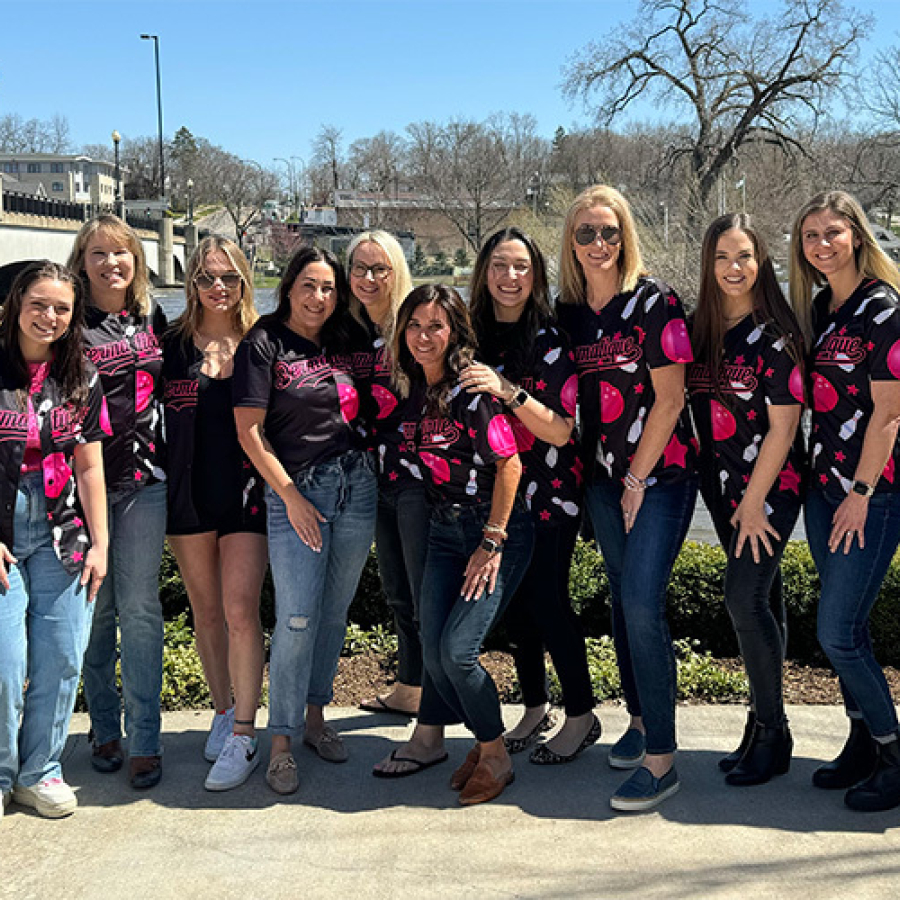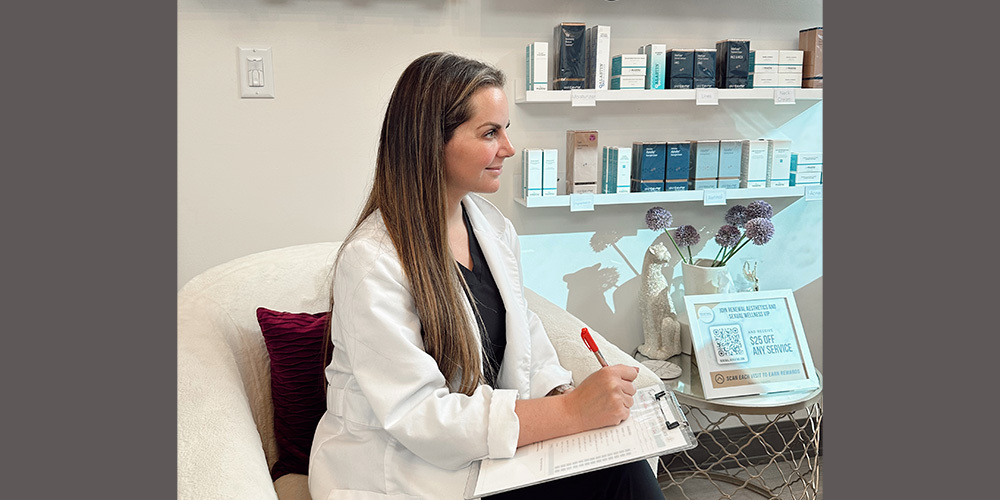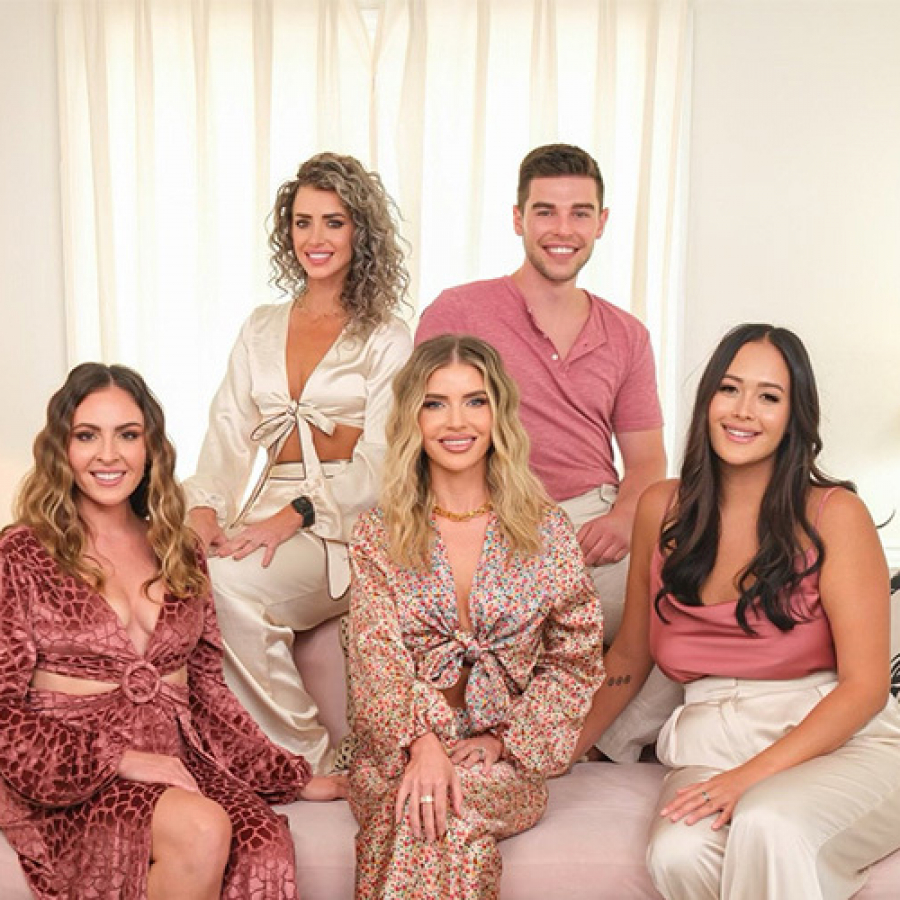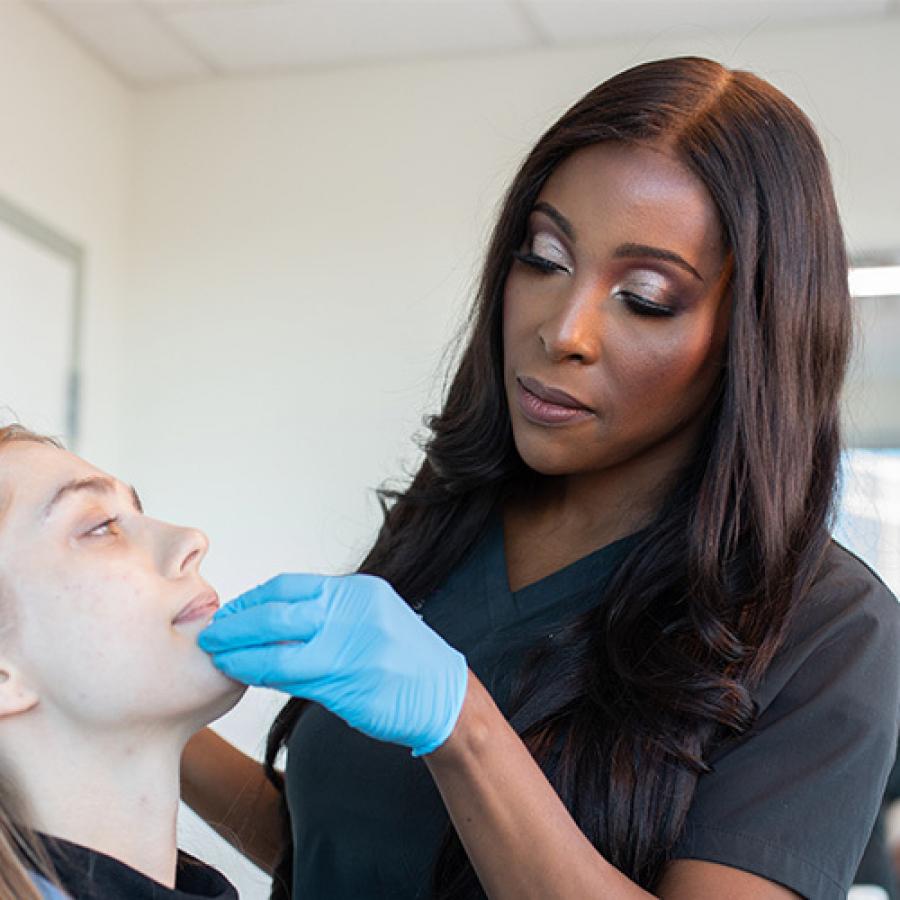
Member Spotlight
Member Spotlight: Practice Philosophy with Lora Kassaros
By Madilyn MoellerComing from a long line of entrepreneurs, Lora Kassaros has a knack for business operations. After an early ...
Posted By Madilyn Moeller, Tuesday, December 6, 2022

By Madilyn Moeller
Young adults are encouraged to make safe, practical career choices. For one practitioner, a series of sensible decisions led her to combine her passions in a role she loves.
Kathleen “Kat” Lofley, DNP, APRN, CNM, WHNP-BC, remembers her first aspirations. As a four-year-old, she wanted to deliver babies and be a mom. Later, in college, she started studying broadcast journalism and music dance theater but decided she needed to do something practical.“
Nursing was kind of a fallback idea for me at first,” Lofley says. “I didn’t realize how passionate I would be about it, and so when I got into nursing, my love for it just took off.”
In the summer before her senior year as a bachelor’s nursing student, she was one of two from her school to be selected for an internship with the Veterans Affairs (VA) hospital. There, she worked in the urology department, helping their male sexual dysfunction clinic. When she graduated, she became the department’s care coordinator.
“Part of that was what they called an expanded scope RN, which again is something specific to the VA, where I saw patients as an RN and had prescriptive ability—I would have the residents co-sign everything—but I saw patients in the male sexual dysfunction clinic, and I really got a passion for doing that.”
She says it was eye opening how big of an impact erectile function can have on identity.
“We may lose our breasts, we may lose our uterus, things like that, and it doesn’t necessarily impact our identity as female the same way I’ve seen non-functional erections affect men’s ability to view themselves as male,” Lofley says. “Actually, the only times I ever had to do active suicide intervention were in that clinic.”
Experiences like that gave her a passion for sexual wellness. Lofley also liked the taste of autonomy she had in that role, so she went back to school to be a women’s health nurse practitioner and ended up with a pair of doctorate degrees. Her second is a certified nurse midwife, bringing her full circle on delivering babies.
When she graduated with her doctorates, Lofley was pregnant and had a toddler. The available roles in midwifery required her to be on call 24/7, so she widened her search and accepted an invitation to work for a spa owner who had started offering injectables. Like many in aesthetics, she thought it would be a side gig she'd do on nights and weekends. She’s now against that idea.”
I feel very strongly that medical aesthetics is—I mean it is—a legitimate branch of medicine and should be treated as such,” Lofley says. “So, I strongly encourage people, if you’re looking to make the leap, it’s not a side gig. Make the leap, make it become your career. You’re going to do better in it that way, anyway.”
Lofley became passionate about aesthetics and worked for a couple medical spas, but felt she wanted to be more in control of how her patients were treated. She didn’t want it to feel like a retail setting. About two years ago, she went out on her own and founded Renewal Aesthetics & Sexual Wellness in Cottonwood Heights, Utah.
“It was a significant decision to put the sexual wellness part in the name,” Lofley says. “I wanted to be able to bring together both those sides. I’ve got the women’s health and the men’s health history and aesthetics stuff, and all of it plays into my main goal: Having your outsides reflect your insides and then your insides reflect your outsides and things functioning everywhere. It all just goes together.”
The practice also provides hormone therapy. Lofley estimates that 65% of her patients are on the aesthetic side, though there is some crossover. Most of Lofley’s patients find her through word-of-mouth referral.
“Often, the feedback I get is ‘I feel much more comfortable here than I did when I went and talked to other places,’” Lofley says. “So even if I’m more expensive than somewhere else, it’s the experience and the comfort level that they’re as much paying for as the procedure."
Men make up around 10% of her patients. In her practice, she finds men are more interested in energy-based devices and suggests this may be due to the stigma they associate with toxin and fillers.
“I mean, these treatments have been driven for women, and when we see poorly done ones all the time, men notice that,” Lofley says. “When they don’t want their significant other to get toxin or fillers, it’s because they can only think of it poorly done. It’s because if it’s well done, you don’t know.”
The main treatments Lofley provides for sexual wellness are the O-Shot and P-Shot, invented by Charles Runels, MD. She underwent hands-on training at his Alabama facility, is a certified provider and pays subscriptions monthly to use those trade-marked names. Dr. Runels’ organization limits these procedures to his trained provider groups who agree to follow standardized procedure guidelines.
Industry conferences offer limited content for sexual health, which may be tied to the procedures’ trademarks. Lofley doesn’t know why these treatments haven’t been taking off but speculates that it has to do with public perception.
“I’m finding that the device companies are talking about it more,” Lofley says. “But it doesn’t seem to be a main focus, and maybe that’s just because it’s still taboo in our country.”
She compares this to the way talking about and treating incontinence has changed over time. Our grandmothers transitioned from tampons to Poise pads, and our mothers started looking into surgical options, but we’ve gone farther.
“Our generation is like ‘Oh hell no, we’re not going to pee our pants forever!’” Lofley says. “We’re not putting up with that. So, we’re doing stuff and we’re telling our friends about it. The whole hush-hush about it has really gone away over the generations to where now vaginal rejuvenation lasers are used for incontinence. I think we’re just going to see that kind of standard protocol.”
A rejuvenation laser is on her to-buy list, but for now she refers out to a trusted colleague. Functional Wellness
Lofley learned bioidentical hormone therapy through online didactic study and an apprenticeship with training based on the methodology of Neal Rouzier, MD, a pioneer in the field. She learned the Rouzier method and has supplemented that knowledge with conferences and educational pieces over time.
When learning to perform hormone treatments, she was exposed to functional medicine methods. Lofley learned to sort through the discrepancies with data, saying you must do your due diligence with any wellness treatments.
“There are certain things in functional medicine that conflict with Western medicine,” Lofley says. “You have to really look at the literature to figure out, ‘Is what I was taught in Western medicine really the best way? Or is what I’m learning in functional medicine too cavalier? Is that not safe?’ There’s a lot of having to find your own way with it, and so I think that is hopefully a good deterrent for people who aren’t serious about it. But it’s also a challenge for those that are trying to find that mentorship, trying to find those good resources where they can learn.”
The lack of a centralized database of research and accepted protocols for hormone therapy means extensive legwork for the providers, just as in aesthetics.
“You have to go and find the mentors, find the people,” Lofley says. “Everybody is searching for someone that knows more than them—the responsible ones are, at least. Because there’s always a better way to do it, there’s always someone doing it a little differently, there’s always a new safety consideration.”
Lofley finds medical aesthetics fascinating. A big part of that, she thinks, is the psychological piece.
“I was having this debate with someone, a business coach, who said ‘When it comes down to it, it’s all vanity,’” Lofley remembers. “I said, ‘But does vanity have to be something that’s superficial?’ When we dye our hair, when we wear makeup, when we wear clothes that are flattering, we carry ourselves differently. That is when I feel like our outsides are reflecting our insides, and so we’re more confident. That’s what it’s about for me.”
Lofley prioritizes her treatments based on her patients’ priorities; if they are not important to the patient, she says, they should not be important to her.
“I can give you 84 things that I could do to your face, but I don’t want that to become a list of 84 things you think you have deficiencies in,” Lofley says.
She wants her patients to become colleagues in making decisions about their faces. She encourages questions and shares her decision-making process but invites them to challenge that.
“When you look at a picture of yourself and there are things that draw your eye negatively, I want to fix or camouflage or enhance or conceal—use any of those adjectives—I want to do that, so that when you look at a picture, you go ‘That was a great day,’” Lofley says. “I do whatever I can so that you can be positive about it, and that’s according to your own standards.”
AmSpa Members receive QP every quarter. Learn how to become a member and make your med spa the next aesthetic success story.
Related Tags
Medical spa news, blogs and updates sent directly to your inbox.

Member Spotlight
By Madilyn MoellerComing from a long line of entrepreneurs, Lora Kassaros has a knack for business operations. After an early ...

Member Spotlight
By Michael Meyer When Connie Brennan, APRN, AGNP-BC, PHN, CANS, CPSN, ISPAN-F, began administering injectables in the 1990s, there ...

Member Spotlight
By Madilyn Moeller When you own a small business, finding the right team members can make a huge impact ...

Member Spotlight
By Madilyn Moeller Audrey Rose, NP, embodies the spirit of community over competition in the aesthetics industry. After a ...